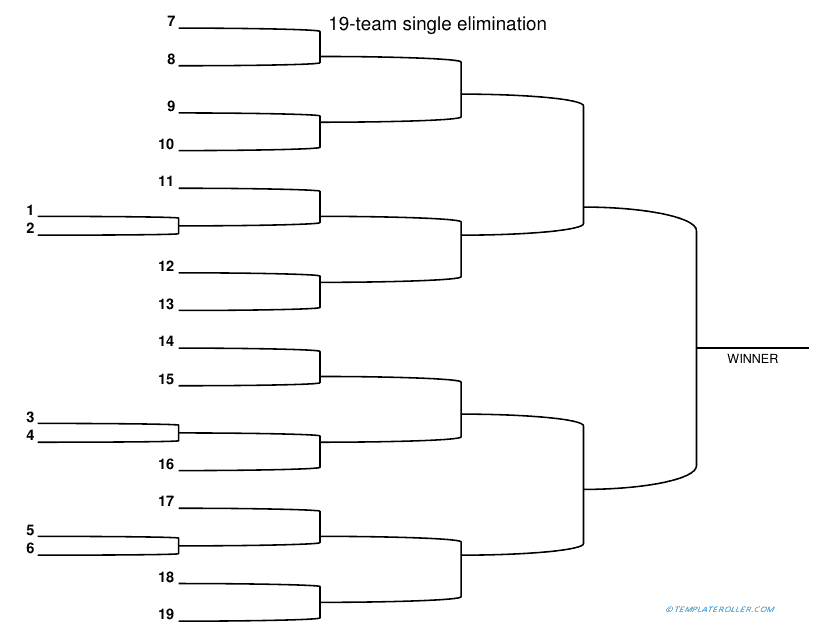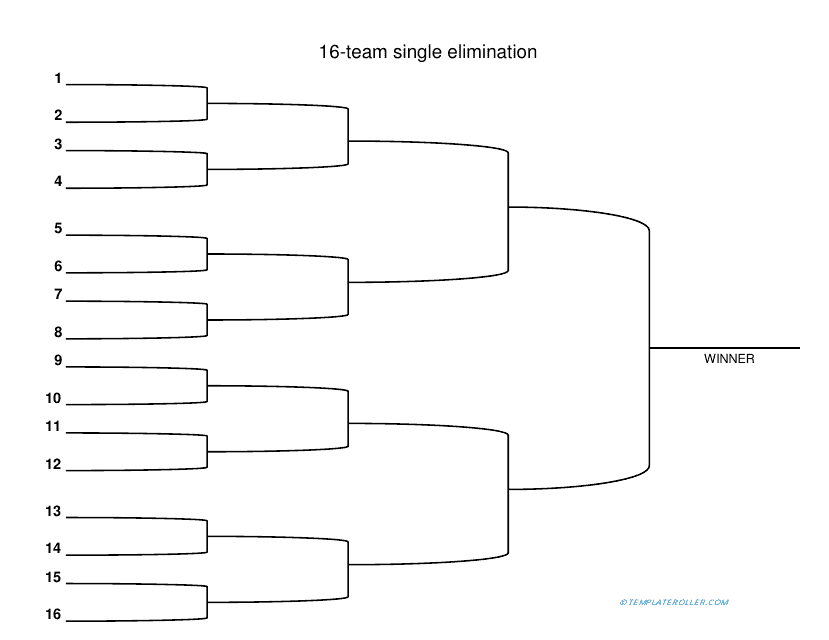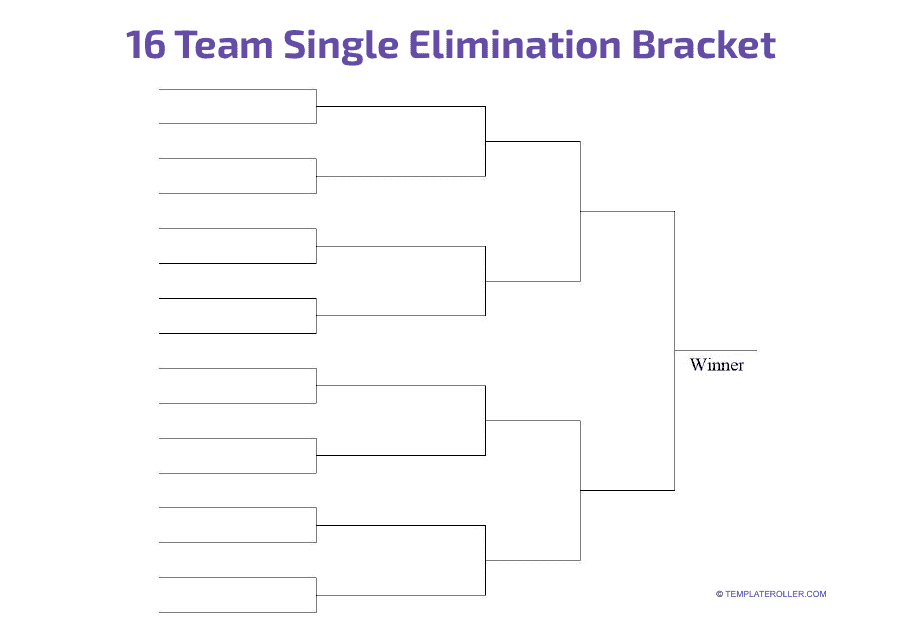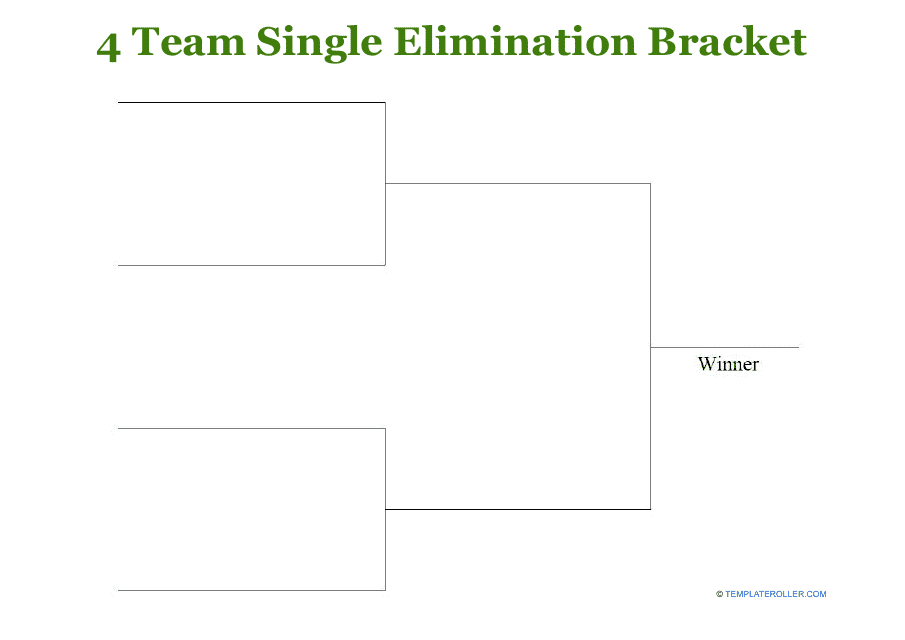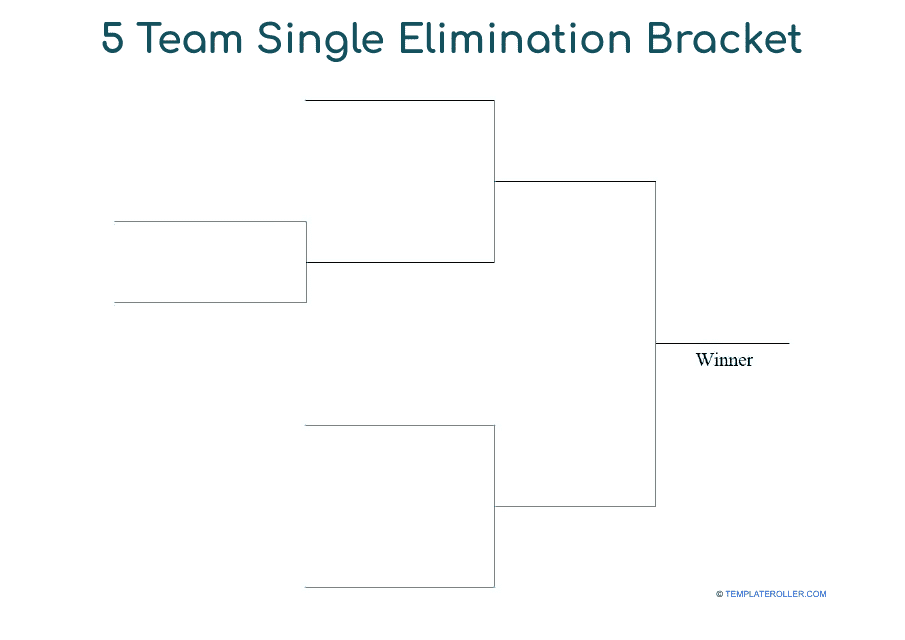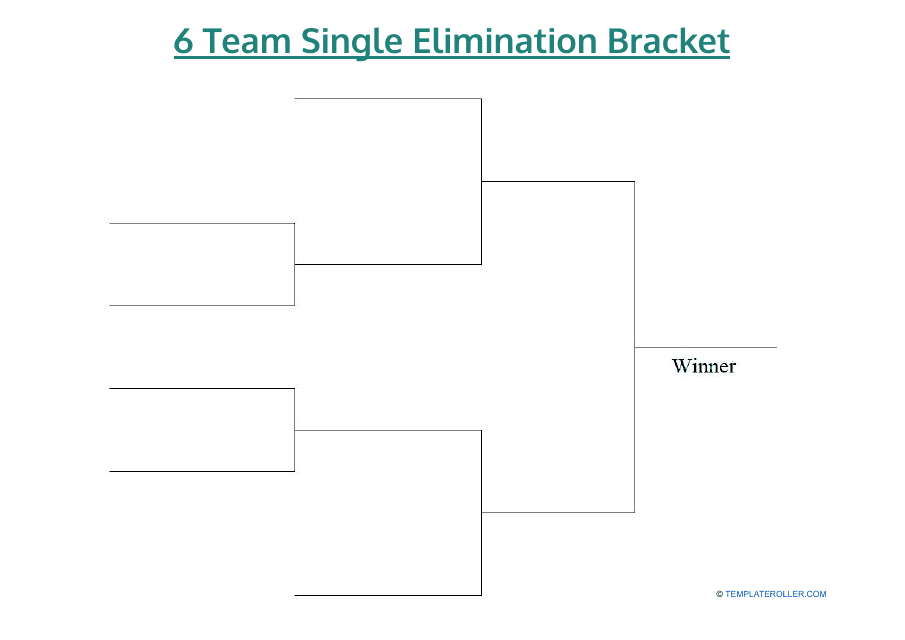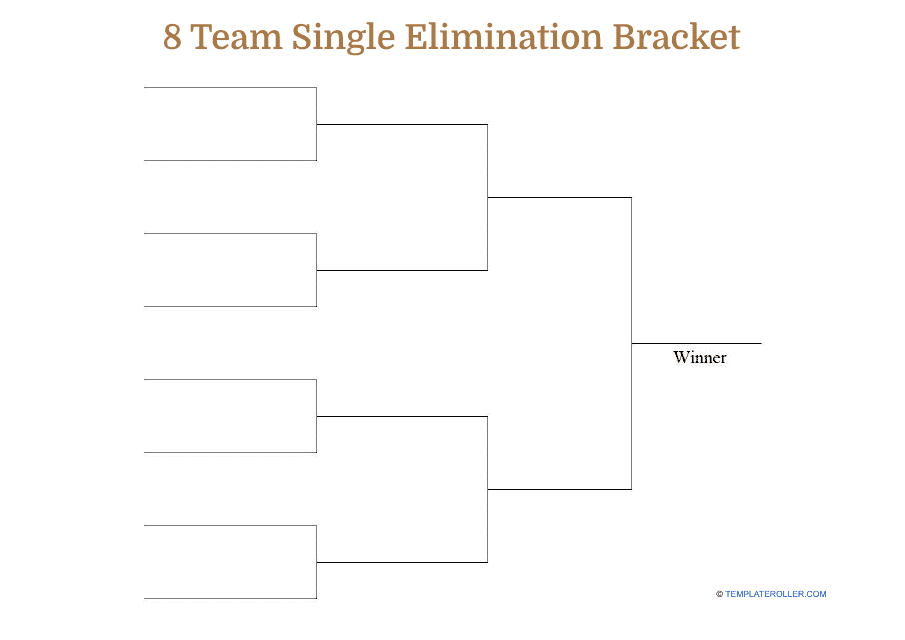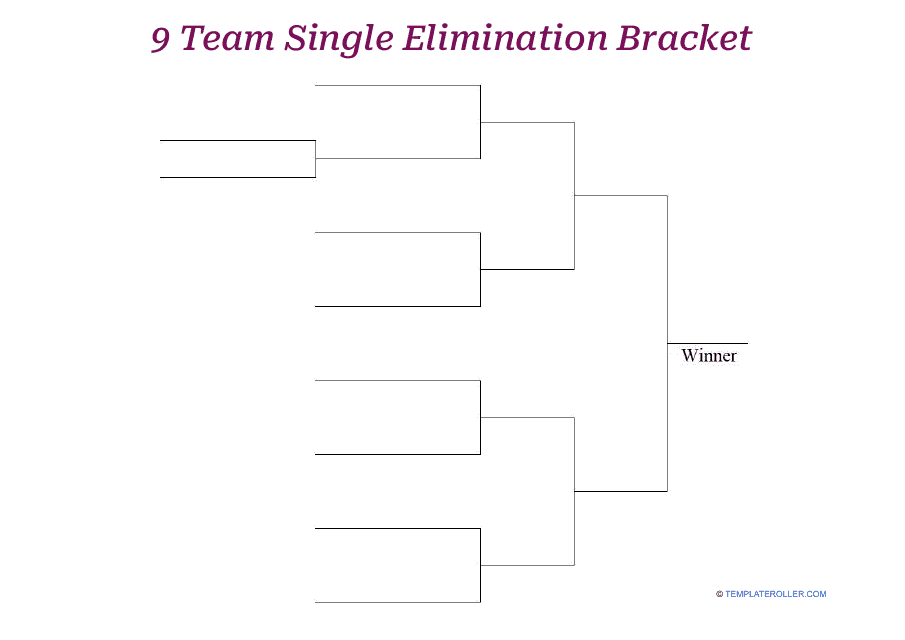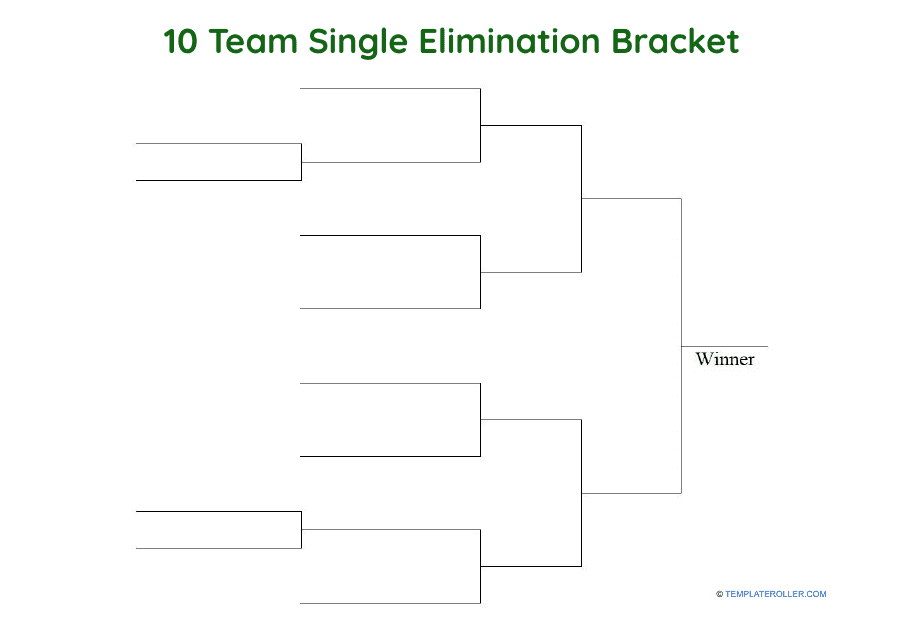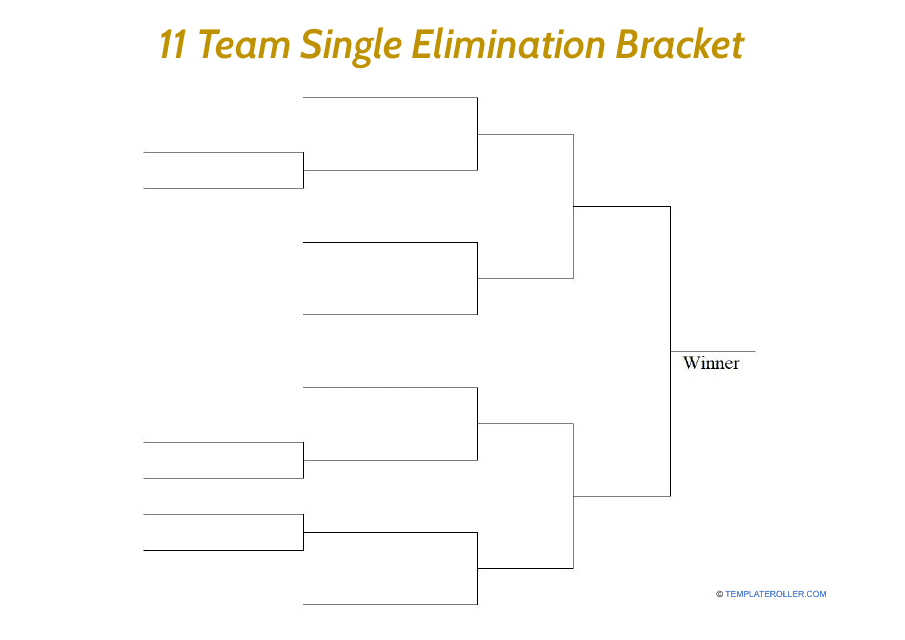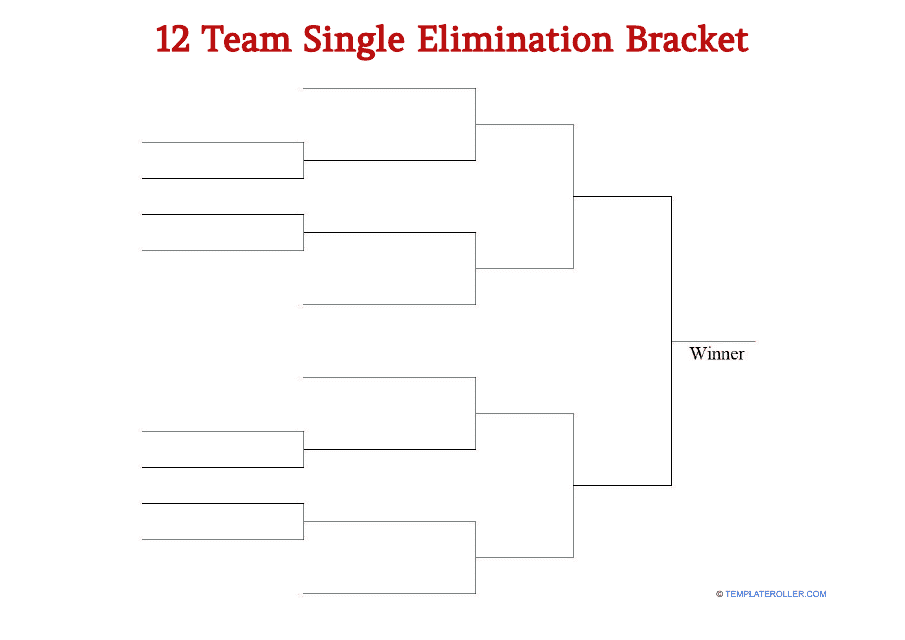Free Single Elimination Bracket Templates
What Is a Single Elimination Bracket?
A Single Elimination Bracket is an internal structure of the tournament that means any team leaves the competition after only one loss in a knock-out round.
Alternate Name:
- Single Elimination Tournament Bracket.
One of the main formats for most major tournaments and contests, this bracket determines the winner even if the team has not encountered the majority of teams that start the tournament. The winning teams advance from one game to the next and the most successful meet in the final round to fight for the main prize. Occasionally, the format provides the participants eliminated right before the final to compete for third place getting a consolation trophy and bronze medals.
You may see a full list of Single Elimination Bracket templates by checking out our library below.
Single Elimination Bracket Template Types
When you are implementing a Single Elimination Bracket, it is necessary to select the diagram that correctly represents the number of teams that take part in the event. Alternatively, a Single Elimination Bracket template can be customized for events that let individuals participate and fight for the main prize.
- 4 Team Single Elimination Bracket;
- 5 Team Single Elimination Bracket;
- 6 Team Single Elimination Bracket;
- 7 Team Single Elimination Bracket;
- 8 Team Single Elimination Bracket;
- 9 Team Single Elimination Bracket;
- 10 Team Single Elimination Bracket;
- 11 Team Single Elimination Bracket;
- 12 Team Single Elimination Bracket;
- 16 Team Single Elimination Bracket.
How Does a Single Elimination Bracket Work?
Before you decide on the format suitable for the competitive event you are in charge of, you should know the pros and cons of every structure - here is how a Single Elimination Tournament Bracket works:
- The obvious advantage of this format is the opportunity to schedule all the events weeks and months ahead of time - there is only one bracket, it is not separated into sections, there will be no necessity to plan additional games or rounds in case there is a tie like in other tournaments, and the allocation of tickets can start long before the first round. Nevertheless, the elimination after only one loss is often considered too harsh - the teams may travel far to take part in one round and immediately leave the competition, the same applies to their fans that may deal with last-minute bookings to secure accommodation and spend a lot of money to stay longer or go home earlier.
- Once you have determined how many teams will take part in the competition, invite them to the event while you are figuring out how to handle numerous organizational issues . It is quite common to hold a separate tournament before the main one in question if there are too many teams that want to compete - this qualification round will permit the strongest participants to advance to the elimination tournament you are arranging.
- Make sure the information you insert in the bracket is legible - there is no need to overload the boxes or cells of the diagram with a detailed description of every round. It is enough to name the teams that face each other (as soon as they are identified in the draw), record the dates and times of events, and indicate the locations - local community centers, school halls, clubs, or stadiums depending on the scale of the events and their significance for residents of your town or international audience.
- Think about the design of the diagram - you may fill in the cells with color and add the logos of teams and the symbols of the tournament to decorate the graph; however, an elaborate background may distract the attention of the person looking at the bracket so check whether the information is easily visible even from a distance which is crucial when the graph is printed out and used as an advertisement poster.
Still looking for a particular template? Take a look at the related templates below:
Documents:
12
This document is a template for a 19-team single elimination bracket. It provides a visual layout for organizing and tracking the progress of a tournament where 19 teams compete in a knockout format until only one team is left standing.
This document is a template for organizing a single elimination tournament with 16 teams. It provides a structure for conducting matches and determining a champion through successive rounds of elimination.
An individual may use this type of template to manage a 16 Team Single Elimination competition.
This template is used when a tournament is being planned with just four teams where a single elimination means that after just one loss, a team will be knocked out of the tournament.
This is a tournament format chosen to determine the winner among five participants - with a single loss, a competitor is unable to win the main prize, and the eventual champion remains undefeated.
This type of template can be used when a single elimination competition is being organized with six teams.
This template is used in a competition format that implies an undefeated road to the final for both teams that face each other to get the main trophy or award.
This type of template is used to organize an 8 Team Single Elimination Tournament.
This type of tournament template is used to determine the winner among nine competitors.
This template can be used for a competition that implies every team out of ten that starts the tournament will have to reach the final round without losing on the way.
This template uses a tournament format for 11 teams that consists of single rounds played between two teams that face each other with the winner advancing further and the loser leaving home without a chance to win.
When organizing a tournament with twelve teams, this type of template should be used by the organizers to help plan the event.

